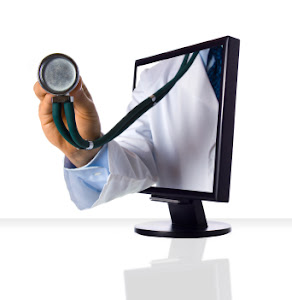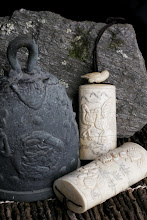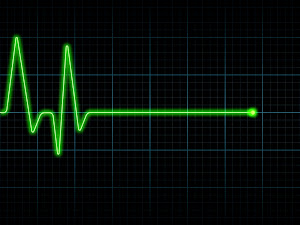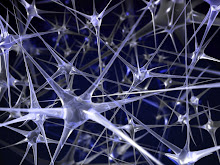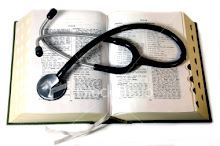 © 2008 by cc-NanoChem e. V. Reproduced per Editor's permission.
© 2008 by cc-NanoChem e. V. Reproduced per Editor's permission.05 February 2009
25 December 2008
On the 411 Frontlines: Compilation of Critical Point-of-Care Medical PDA Solutions for Use During National/Global Emergencies, Catastrophes, Disasters

ON THE 411 FRONTLINES: COMPILATION OF CRITICAL POINT-OF-CARE MEDICAL PDA SOLUTIONS FOR USE DURING NATIONAL & GLOBAL EMERGENCIES, CATASTROPHES, AND DISASTERS
.911 - Emergency Management Resource
2009 Intravenous Medications
5-Minute Emergency Medicine Consult
5-Minute Infectious Diseases Consult
5-Minute Orthopaedic Consult
5-Minute Toxicology Consult
ABX Guide
AccessEmergency Medicine
AccessSurgery
Acuson P10 (pocket ultrasound unit)
Advanced Pediatric Life Support
ALS for the BLS Provider Field Guide (print)
Anesthesia Central
Anesthesia Toolbox
Antibiotika Pocketcard
Archimedes 360°
arpadi (audial/visual medical translation & interpretation)
Arzneimittel - Pocket Plus
Atlas of Emergency Medicine
BEIKS English-Arabic Medical Dictionary
BEIKS First Aid Spanish Dictionary
BEIKS/Pharma-Lexicon Medical Abbreviations Dictionary
BEIKS Epidemiology Terms Glossary
Best Practices for WHO Epidemic Alert and Response (pdf)
Bioterrorism Ready Reference
BMC Emergency Medicine
Bones
British Red Cross Emergency Multilingual Phrasebook (pdf)
Cardiopulmonary Resuscitation
Checkliste Arzneimittel
Clinical Companion to Medical Surgical Nursing
Clinical Manual of Emergency Pediatrics
Clinical Trauma and Toxicology
Clinical Xpert
Communicable Disease Control in Emergencies: A Field Manual (pdf)
Communicable Diseases and Infection Control for EMS
Critical Care Handbook of the Massachusetts General Hospital for PDA
Cross-Cultural Assessment of Psychological Trauma and PTSD (pdf)
CURRENT Diagnosis & Treatment: Emergency Medicine
Detroit Receiving Hospital Emergency Medicine Handbook
Diagnosaurus
Disaster and Trauma eBook
Disaster Psychiatry Outreach (various)
DMORT (pdf)
Drug Guide for Paramedics
DrW-Urgences
dTree-MMSE
Dx/Rx Heart Failure
eMedic
Emergency Central
Emergency Medical Procedures
Emergency Medicine Constellation
Emergency Medicine Manual
Emergency Medicine On Call
Emergency Triage
Emergency Ultrasound
EMS Responder Toolkit
English & Spanish Medical Words & Phrases
Epi Info
EpiSurveyor
EpiTool
Epocrates Essentials
ER & ICU ToolBox
ER Suite
Esaurus Online English-Chinese Medical Dictionary
Essential Guide to Acute Care
Evac Sys
Field Guide to Wilderness Medicine
Field Management of Chemical Casualties Handbook
FlightWeb for Air Medical Professionals
Goldfrank's Manual of Toxicologic Emergencies
HazMat CE
Index Nominum
Infectious Diseases: Emergency Department Diagnosis and Management
International Pharmacopoeia: Pharmacopoea Internationalis (pdf)
IV Med Notes: Nurse's Clinical Pocket Guide
Just the Facts in Emergency Medicine
Lexi-Complete
Lexi-Drugs para Pediatria
Lexi-I.V. Compatibility
Lexi-Infectious Diseases
Lexi-NBCA (Nuclear, Biological, & Chemical Agent) Exposures
Lexi-Pharmacogenomics
Lexi-Poisoning & Toxicology
Life Support 360°
Management of Dead Bodies after Disasters: Field Manual for First Responders (pdf)
Managing Mass Fatalities: Toolkit for Planning (pdf)
MedCalc
Medical Management of Biological Casualties Handbook
Medical Management of Chemical Casualties Handbook
Médicins Sans Frontières Références médicales (pdf)
MedMath
MedNotes
Mental Health Services in Disasters: Manual for Humanitarian Workers (print)
Merck Veterinary Manual
mobile MerckMedicus
Mobile REMM (Radiation Event Medical Management)
MobilePDR
MobileWelch
Mosby's 2009 Nursing Drug Reference
Mosby's PDA Dictionary of Medicine, Nursing, & Health Professions
Nurse to Nurse: Wound Care
Nursing Diagnosis Handbook
Orthopedic Traumatology: A Resident's Guide
Outbreak ID
Ovid@Hand
Oxford American Handbook of Emergency Medicine
Oxford Handbook of Accident and Emergency Medicine
Palm CJKOS
Palm LEng Series (language extension & interface localization)
PalmEKG
Paramedic's ToolBox
Patient Tracker
PDA Disaster Trauma Handbook
Pediatric Emergency Medicine
PEPID Battlefield Medicine
PEPID ED Emergency Physician Suite
PEPID EMS Plus NAEMSE
PEPID Integrator- Electronic Medical Records Solutions
PEPID Pre-Hospital Emergency Care Suite
PEPID RN Critical Care Suite
Pharmanesth
PHTLS Pre-Hospital Trauma Life Support: Military Version (e-book)
PICOmaker
Pocket Advisor - ICU Management
Pocket Emergency Medicine
Pocket Emergency Paediatric Care
Pocket Reference for ALS Providers
Pocket Reference for Chemical, Biological, & Radiologic Agents
Pocket Reference for EMTs and Paramedics
Pocket Reference for the BLS Provider
Poisoning & Drug Overdose
Porter's Pocket Guide to Emergency and Critical Care
RAPID ACLS
RAPID EMT
RAPID Interpretation of EKGs
RAPID Medical Response to Weapons of Mass Destruction
RAPID Paramedic
RAPID Pediatric Advanced Life Support
RAPID Pediatric Emergency Care
RAPID Rescue Spanish
Ratgeber Infektionskrankheiten
Rosen and Barkin's 5-Minute Emergency Medicine Consult
SAHANA Disaster Management System
Sanford Guide to AntiMicrobial Therapy
Saunders Manual of Critical Care
Siemens PDA Medical Abbreviations & Terminology
Spanish Reference for EMS Providers
SpeakEasy EMS Translator
Special Operations Forces Medical Handbook
Streetmedic's Handbook
Tarascon Pocket Pharmacopoeia
TealLock
Techniques in Operative Orthopaedics: Trauma
TIMI Risk Score
Tintinalli's Emergency Medicine
TOMES Plus System
Traité de médecine d'urgence
Trauma
Trauma: Blast Injuries
Ultralingua French-English Medical Dictionary
Unbound MEDLINE
Unbound Surgery
Visual Diagnosis in Emergency and Critical Care Medicine
WardWatch
Washington Manual of Ambulatory Therapeutics
Weapons of Mass Destruction: Emergency Care
Wireless Information System for Emergency Responders (WISER)
Wireless Internet Information System for Medical Response in Disasters (WIISARD)
© LaVerne L. Poussaint
25 December 2008
18 October 2008
Mobile Technology in Global E-Health & Disaster Relief Communications
EpiSurveyor Software for Wireless Health Data Collection
http://www.datadyne.org/?q=episurveyor/home
http://www.unfoundation.org/global-issues/technology/mobile-health-for-development.html
Status of NanoMedicine & Medical NanoRobotics
13 October 2008
TeleMedicine and Disaster Relief
 Earthquake 2005. Kashmir. Image: Courtesy of Medical Teams International. http://www.medicalteams.org/site/PageServer?pagename=what_aid
Earthquake 2005. Kashmir. Image: Courtesy of Medical Teams International. http://www.medicalteams.org/site/PageServer?pagename=what_aid Healthcare technology aspects of disaster planning - based on the post-tsunami experience
Palliative Care & End-of-Life Interdisciplinary Approaches
 Image: © Cindy Chang. All Rights Reserved.
Image: © Cindy Chang. All Rights Reserved. mHealth & Mobile TeleMedicine sessions
 Image: © Foreby. Creative Commons License / SRR.
Image: © Foreby. Creative Commons License / SRR. http://www.who.int/hac/techguidance/tools/disrupted_sectors/module_07/en/index.html
PRESS RELEASE:
Conference engages private sector and public health leaders in developing vision for improved healthcare in the developing world
Bellagio, Italy (July 28, 2008) —
The United Nations Foundation and Vodafone Group Foundation’s Technology Partnership (Technology Partnership) announced today the start of a conference session designed to harness the potential of mobile health (mHealth) to unlock access to health data and improve healthcare in the developing world. Co-facilitated by the Technology Partnership and the Telemedicine Society of India, the session is part of the Rockefeller Foundation conference “Making the eHealth Connection: Global Partners, Local Solutions.”
The “mHealth and Mobile Telemedicine” session is gathering 25 private sector and public health leaders to explore the challenges, opportunities and way forward in building mHealth systems that can improve the access, efficiency and quality of health services in the developing world. The overarching goal of the Rockefeller Foundation conference is to develop a roadmap and global partnerships that support the use of emerging digital technologies to improve public health.
“As global trends such as climate change, the food crisis, and human migration place increasing strains on developing country health systems, there is an ever larger need for technological innovation to help strengthen international public health efforts,” said Claire Thwaites, Technology Partnership Head, UN Foundation and Vodafone Group Foundation. “Developments in the field of mHealth in particular are creating a remarkable opportunity to bring about a sea change in healthcare delivery, even in the most resource-poor environments,” she added.
mHealth session participants include representatives of Cisco, Google, Microsoft, Nokia, and Qualcomm, as well as the Earth Institute, Gates Foundation, MIT, and the UN World Health Organization. Over the week, participants will examine the landscape of mHealth and mobile telemedicine, assess priority issues, and identify potential next steps for a multi-sector partnership dedicated to advancing mHealth programs in the Global South.
“Mobile phone use is exploding across the developing world, offering the opportunity to leapfrog other applications and services on both the health and technology fronts,” said Mitul Shah, Senior Director of Technology at the United Nations Foundation. “This collaborative effort with the Rockefeller Foundation and the other private sector and public health leaders assembled here this week opens the door for the kind of broader, public-private partnership that could bring us to a tipping point in addressing some of the most intractable public health challenges,” he said.
___________________________________________
Note: For more information on the “mHealth and Mobile Telemedicine” session, visit the Rockefeller Foundation’s eHealth Connection website at http://www.ehealth-connection.org/.
_______________________________________
About the UN Foundation and The Vodafone Group Foundation PartnershipThe UN Foundation-Vodafone Group Foundation Partnership strives to be the leading public-private alliance using strategic technology programmes to strengthen the UN’s humanitarian efforts worldwide. Created in October 2005, with a £10 million commitment from The Vodafone Group Foundation matched by £5 million from the UN Foundation, the Partnership has three core commitments: (1) to develop rapid response telecoms teams to aid disaster relief; (2) to develop health data systems that improve access to health data thereby helping to combat disease; and (3) to promote research and innovative initiatives using technology as an agent and tool for international development.
Further information can be found at: www.unfoundation.org/vodafone.
Katherine MillerUnited Nations FoundationM: (+1) 202.489.2205E: kmiller@unfoundation.org I: www.unfoundation.org/vodafone
Helen BrockettThe Vodafone Group FoundationT: +44 (0) 7500 032886E: helen.brockett@vodafone.comI: http://www.vodafonefoundation.org/
Claire Thwaites
Head of the Vodafone Foundation and UN Foundation Partnership
Claire Thwaites joined the UN Foundation in December 2007; she heads the Partnership between the Vodafone Foundation and the United Nations Foundation.
Mitul Shah
Senior Director, Technology Partnerships
Mr. Mitul Shah is the Senior Director of Technology Partnerships at the United Nations Foundation. He is directing a partnership between the Vodafone Group Foundation and the UN Foundation. He is also directing the United Nations Foundation’s efforts on program evaluation and performance measurement.
Harnessing Cell Phone Technology for Mobile Health Applications
 Image Source: University of California (Berkeley). Courtesy of Dr. Boris Rubinsky.
Image Source: University of California (Berkeley). Courtesy of Dr. Boris Rubinsky. Secondary Text Source: Sujathafan.
"The cell phone is going to solve rural health-care problems, whether it's rural India or rural Indiana. Hard to believe – Is it not?
Indeed, of some 30 health-care-related projects at various universities recently funded by Microsoft (MSFT) Research, 17 involve cell phones. One team, at Washington University in St. Louis, is attempting to take ultrasound readings using a cell phone and a TV. Scientists at the University of Pittsburgh are working to create a heart monitor that relies on a cell phone to analyze the readings and dial 911 whenever a person's cardiac activity careens into dangerous territory, providing emergency responders with a location and a preliminary diagnosis.
Now, via a cell phone, you can have easy access to medical centres having ultrasounds, X-rays, magnetic resonance images and other medical imaging technology. This technique, developed by Prof. Boris Rubinsky, has the potential to provide sophisticated radiological diagnoses and treatment to the majority of the world's population lacking access to such technology.
Most medical imaging devices consist of three essential components: the data acquisition hardware that is connected to the patient, the image processing software and a monitor to display the image. When these components are combined into one unit, machine parts often become redundant, substantially increasing the cost of the device.
Rubinsky (UC Berkeley professor of bioengineering and mechanical engineering) and his team came up with the novel idea of physically separating these components so that the most complicated element - the processing software used to reconstruct the raw data into a meaningful image - can reside at an offsite central location, presumably in a large center where resources are available for its operation and maintenance. This central location would be used to service multiple remote sites where far simpler machines collect the raw data from the patients.
That's where the cell phone comes in. The phone, hooked up to the data acquisition device, would transmit the raw data to the central server where the information would be used to create an image. The server would then relay the image back to the cell phone, where it can be viewed on the cell phone's screen.
"This design significantly lowers the cost of medical imaging because the apparatus at the patient site is greatly simplified, and there is no need for personnel highly trained in imaging processing," said Ivorra, the post-doctoral researcher. "The data acquisition device can be made with off-the-shelf parts that somebody with basic technical training can operate. As for cell phones, you could be out in the middle of a remote village and still have cell phone access. They're so prevalent because so little infrastructure is required to maintain wireless networks."
The principle behind medical imaging is the production of a map based upon the physical properties of different types of tissue, such as tumors, muscle and fat. An MRI, for instance, produces a map of proton density in different tissue, while an ultrasound produces a map based upon pressure waves.
The researchers chose electrical impedance tomography (EIT) to demonstrate the feasibility of using cell phones in medical imaging. EIT is based upon the principle that diseased tissue transmits electrical currents differently than does healthy tissue. The difference in resistance to electrical currents is translated into an image. "
http://berkeley.edu/news/media/releases/2008/04/29_cellphone.shtml
SATELLIFE's Medical PDAs Projects in Africa & Asia
 Image source: University of Queensland, Australia.
Image source: University of Queensland, Australia.http://pda.healthnet.org/download/pdapaper1.pdf
http://64.233.169.104/search?q=cache:HijcKCxvPxYJ:www.dot-com-alliance.org/resourceptrdb/uploads/partnerfile/upload/320/Final_Project_Report_June_301.doc+nepali+script+conversion+pda+satellife&hl=en&ct=clnk&cd=2&gl=ca
http://ieeexplore.ieee.org/Xplore/login.jsp?url=/iel3/4891/13496/00620662.pdf?arnumber=620662
09 October 2008
China halts herbal injections of Siberian ginseng
 Image: Eleutherococcus senticosus / 刺五加 / Ciwuja / Siberian ginseng. Released under CCL / GNUFDL by Stanislav Doronenko.
Image: Eleutherococcus senticosus / 刺五加 / Ciwuja / Siberian ginseng. Released under CCL / GNUFDL by Stanislav Doronenko. NanoMission: NanoMedicine v2: Cancer Drug Delivery
© Playgen™. All Rights Reserved.
Register to download Nanomission™ game modules: http://www.nanomission.org/
Sponsorship opportunities exist to make fully-developed PC version freely available to schools, colleges, and universities.
02 October 2008
Words Count - Radiology & Medical Linguistics

The Words Count — Radiology and Medical Linguistics
Bruzzi J. F.
N Engl J Med 2006; 354:665-667, Feb 16, 2006. Perspective
http://content.nejm.org/cgi/content/extract/354/7/665
30 September 2008
Clinical Trials, "Snake Oil Science", and Medical Research Studies

http://www.nytimes.com/2008/09/30/health/30stud.html?pagewanted=1
http://www.nytimes.com/2008/09/30/health/research/30tria.html
http://ecam.oxfordjournals.org/
http://clinicaltrials.gov/
http://nccam.nih.gov/clinicaltrials/
Design & Implementation of Centralized TeleMed Model in Palestine

Image: © Matt Britt. Released under Creative Commons License 2.5
http://ieeexplore.ieee.org/xpl/freeabs_all.jsp?tp=&arnumber=1403868&isnumber=30463
19 September 2008
La conservation, la préservation, la numérisation de les médicaux, scientifiques, juridiques, et d'autres manuscrits de Tombouctou
 Image: © Alida Boye. Source: l’Organisation des Nations Unies pour l’Education, la Science et la Culture (UNESCO).
Image: © Alida Boye. Source: l’Organisation des Nations Unies pour l’Education, la Science et la Culture (UNESCO).18 September 2008
Global Translation, Transcription, Localization, & Interpretation Services by Certified Experts in Medicine, Science, Engineering Subject Matters
Digital Library Database Collections of the World IntelIectual Property Organization
Traditional Knowledge, Ayurvedic Formulations, and Medical Patents
_svg.png) Curcumin / Chemical structure / Keto form.
Curcumin / Chemical structure / Keto form.http://www.tkdl.res.in/tkdl/langdefault/common/home.asp?GL=Eng
http://www.pbs.org/newshour/bb/asia/jan-june07/patents_05-21.html
17 September 2008
NanoMedicine Proof-of-Concept Game Demos
NanoMedicine Nanobot. © Playgen™. All Rights Reserved.
NanoMedicine Vesicle. © Playgen™. All Rights Reserved.
NanoMedicine Introductory Challenge. © Playgen™. All Rights Reserved.
Register to download Nanomission™ game modules:
http://www.nanomission.org/
Sponsorship opportunities exist to make fully-developed PC version freely available to schools, colleges, and universities.
Delirium & Sedation in Primary Palliative Care Settings
http://video.google.ca/videoplay?docid=-2568874287566875516&hl=un [companion to Delirium case presentation]
16 September 2008
27 May 2008
29 February 2008
Medicine Hunter in Peru
On a Remote Path to Cures
28 February 2008
18 January 2008
07 December 2007
Palliative Medicine Handbook, 3rd ed.
06 December 2007
Mourir Entouré de Soins / Dying For Care
09 November 2007
09 October 2007
E-Learning & E-Health Infrastructure Tools in Palliative & End-of-Life Care: The Pallium Project
E-Learning & E-Health Infrastructure Tools in Palliative & End-of-Life Care: The Pallium Project
http://www.pallium.ca/index.php?s=phase1&p=14
TeleMed Initiatives in Remote Regions of Canada: First Nations and Inuit HealthCare
Inserted from <http://www.hc-sc.gc.ca/fnih-spni/pubs/ehealth-esante/2001_tele-rpt/index_e.html>













